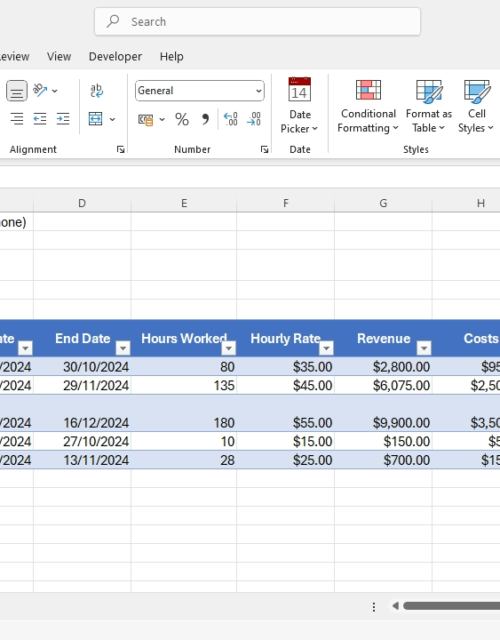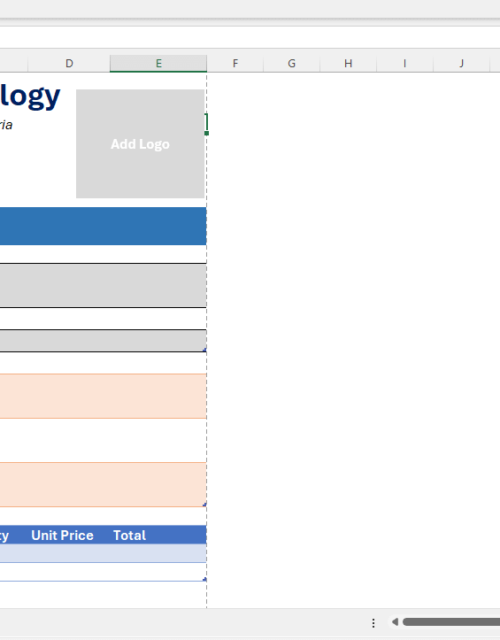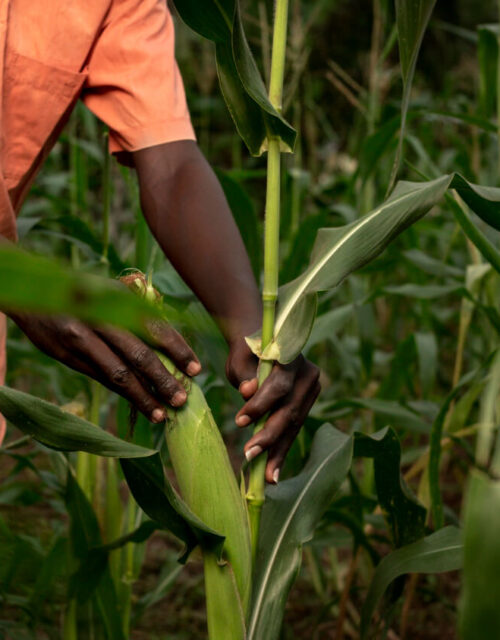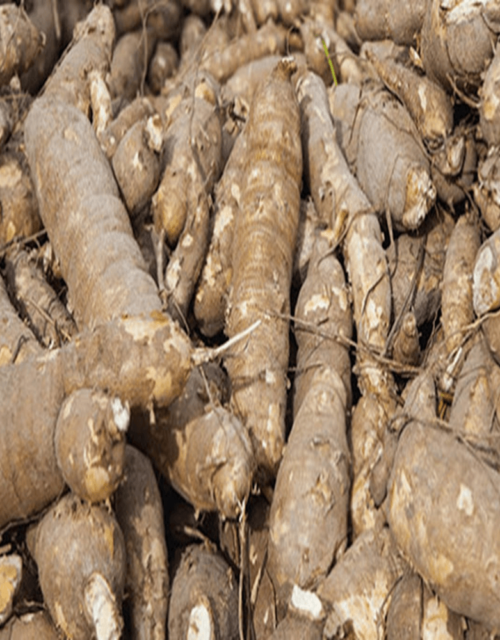Top 10 Challenges Facing Nigerian Farmers: Innovative Solutions for 2025 and Beyond
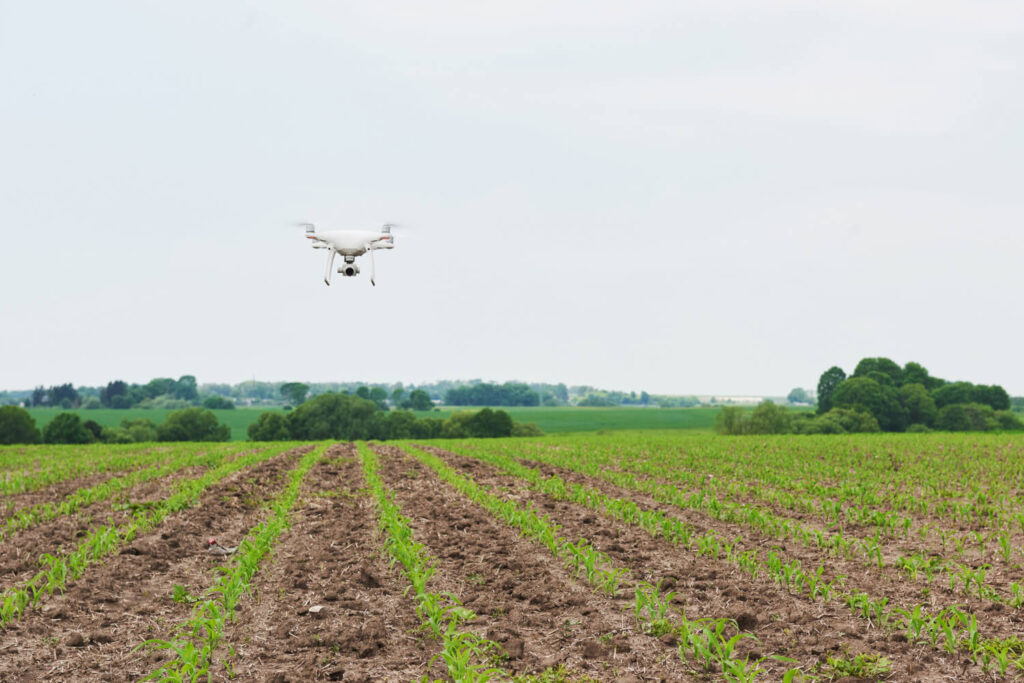
In the heart of West Africa, Nigeria’s agricultural sector is a cornerstone of the nation’s economy. It employs a significant portion of the population and contributing substantially to the country’s GDP. However, there are many challenges facing Nigerian farmers that hinder their productivity and threaten food security.
This comprehensive guide delves into the most pressing challenges facing Nigerian farmers and offers practical, forward-thinking solutions to overcome these obstacles.
1. Climate Change and Unpredictable Weather Patterns
Challenge:
One of the challenges facing Nigerian farmers is unpredictable weather conditions. In Nigeria, there is increasingly erratic rainfall, prolonged droughts, and extreme weather events. These weather patterns disrupts traditional farming calendars and reducing crop yields.
Solution:
- Climate-Smart Agriculture (CSA) Techniques:
- Implement drought-resistant crop varieties: The International Institute of Tropical Agriculture (IITA) has developed improved cassava, yam, and cowpea varieties that can withstand prolonged dry spells. For instance, the TMS 30572 cassava variety shows a 40% yield increase under drought conditions.[1]
- Water-efficient irrigation systems: Drip irrigation can reduce water usage by up to 60%. The Kano River Irrigation Project has successfully implemented drip irrigation, increasing tomato yields by 50% while using 40% less water.
- Climate forecasting tools: The NIMET Weather App provides localized weather forecasts and agricultural advisories. Farmers using this app in Plateau State reported a 25% reduction in crop losses due to better-timed planting and harvesting.
- Agroforestry and Intercropping:
- Promote agroforestry systems that integrate trees with crops. The Nigerian Organic Agriculture Network reports that farms practicing agroforestry see a 30% increase in overall productivity and improved soil health.[2]
- Implement intercropping strategies to diversify risk. A study in Oyo State showed that maize-cassava intercropping increased the land equivalent ratio by 1.5, meaning more efficient land use.[3]
- Soil and Water Conservation Techniques:
- Implement contour plowing and terracing in hilly areas to prevent soil erosion. Farmers in Taraba State using these techniques reported a 35% reduction in topsoil loss.[4]
- Promote the use of mulching to retain soil moisture. Cotton farmers in Zamfara State using mulch reported 20% higher yields during dry spells.[5]
- Early Warning Systems and Insurance:
- Collaborate with the Nigerian Meteorological Agency (NiMet) to improve early warning systems for extreme weather events.
- Promote index-based weather insurance. The Nigeria Incentive-Based Risk Sharing System for Agricultural Lending (NIRSAL) reports that farmers with weather insurance are 40% more likely to invest in improved inputs.[6]
Case Study:
In Kano State, farmers using drought-resistant sorghum varieties developed by IITA reported a 40% increase in yield during the 2023 growing season, despite below-average rainfall.[7] Additionally, those who complemented this with water harvesting techniques saw an additional 15% yield improvement.[8]
2. Limited Access to Modern Agricultural Technology
Challenge:
Another major challenge facing Nigerian farmers is lack of the access to modern farming equipment and technologies. This leads to inefficient production methods and lower yields.
Solution:
- Equipment-Sharing Cooperatives:
- Establish farmer cooperatives for pooling resources to purchase modern machinery. The Tractor Owners and Operators Association of Nigeria (TOOAN) reports that cooperative members have 60% higher mechanization rates than non-members.[9]
- Implement a pay-per-use model for expensive equipment. In Ogun State, a cooperative-managed combine harvester reduced harvesting costs by 40% for small-scale rice farmers.[10]
- Mobile Apps for Equipment Access:
- Promote apps like Hello Tractor, which connects farmers with nearby tractor owners. Since its launch, Hello Tractor has facilitated over 500,000 hectares of farmland cultivation in Nigeria.[11]
- Develop similar platforms for other types of equipment. The “FarmGear” app in Kaduna State has helped increase access to threshers and planters by 70% among registered users.[12]
- Precision Agriculture Tools:
- Introduce affordable soil testing kits. The SoilSense project in Kogi State helped farmers optimize fertilizer use, resulting in a 25% increase in maize yields.
- Promote the use of drones for crop monitoring and targeted pest control. A pilot project in Kebbi State showed that drone-assisted pest management reduced pesticide use by 30% while maintaining yield levels.
- Locally Adapted Technologies:
- Support the development of locally manufactured, low-cost technologies. The National Centre for Agricultural Mechanization (NCAM) has developed a cassava peeling machine that reduces processing time by 90% compared to manual peeling.[13]
- Encourage partnerships between universities and local manufacturers. The Federal University of Technology, Minna,[14] collaborated with local artisans to produce affordable rice transplanters, increasing adoption of mechanized transplanting by 50% in Niger State.[15]
- Training and Capacity Building:
- Establish Agricultural Technology Demonstration Centers. The center in Nasarawa State has trained over 5,000 farmers[16] in modern farming techniques, with participants reporting an average 30% increase in productivity.[17]
- Implement a “Train the Trainer” program to create a network of tech-savvy farmers who can support their communities. In Ebonyi State, this approach led to a 40% increase in the adoption of improved rice cultivation techniques.
Insight:
According to the Federal Ministry of Agriculture and Rural Development, farms using mechanized equipment show productivity increases of up to 3.5 times compared to traditional manual methods.[18] A study by the Agricultural Research Council of Nigeria found that every 10% increase in mechanization leads to a 2.8% increase in agricultural GDP.[19]
3. Inadequate Storage and Post-Harvest Facilities
Challenge:
Post-harvest losses in Nigeria can reach up to 50% for perishable crops due to inadequate storage facilities and poor handling practices.
Solution:
- Modern Storage Solutions:
- Implement hermetic storage bags: PICS (Purdue Improved Crop Storage) bags can reduce post-harvest losses by up to 98% for grains. A study in Benue State showed that maize stored in PICS bags for 6 months had only a 1% loss compared to 45% in traditional storage.[20]
- Promote metal silos for long-term grain storage. Farmers in Kaduna using metal silos reported 95% reduction in pest damage and 20% higher selling prices due to better quality preservation.[21]
- Community-Based Cold Storage Facilities:
- Establish solar-powered cold rooms in key agricultural hubs. A pilot project in Oyo State reduced post-harvest losses of tomatoes from 40% to 5%, increasing farmer incomes by 25%.
- Implement mobile cold storage units. The “ColdHubs” initiative in southeast Nigeria has helped over 5,000 farmers reduce spoilage of perishables by 80%.
- Improved Handling Techniques:
- Train farmers in proper harvesting methods. Studies show that proper harvesting and handling of tomatoes can substantially reduce loss and damage.
- Promote the use of plastic crates for fruit and vegetable transport. es. For example, a study found that using plastic crates instead of woven sacks reduced postharvest losses from 40% to 5%. This is because plastic crates provide better protection, minimizing bruising and crushing during transportation.
- Value Addition and Processing:
- Establish small-scale processing centers for perishable crops. A cassava processing unit in Ondo State helped farmers increase their income through the production of garri and high-quality cassava flour.[22]
- Promote solar drying technologies for fruits and vegetables. For example, solar drying can preserve the nutritional quality and extend the shelf life of produce by removing moisture efficiently. This method is cost-effective, environmentally sustainable, and helps farmers access new markets by providing higher quality products
- Supply Chain Integration:
- Implement blockchain technology for supply chain tracking. For example, blockchain-based systems have been implemented to ensure proper payments and traceability, reducing middleman costs and improving transparency.
- Develop direct farmer-to-consumer platforms. For instance, the Lagos State Agricultural Development Authority (LSADA) partnered with Farm Junction to link farmers with consumers, addressing marketing challenges and post-harvest losses. Additionally, platforms like FarmNow are working to tackle post-harvest waste and food insecurity in Nigeria.
Insights:
Improved storage technologies can significantly reduce post-harvest losses, which is a major issue in Nigeria. Proper storage and handling practices are known to enhance the quality and market value of agricultural products.
4. Limited Access to Finance and Credit
Challenge:
Many Nigerian farmers struggle to access the capital needed for investments in improved seeds, fertilizers, and equipment.
Solution:
- Digital Financial Services:
- Promote platforms like FarmCrowdy and ThriveAgric: Platforms like FarmCrowdy and ThriveAgric have significantly contributed to supporting smallholder farmers in Nigeria. FarmCrowdy, launched in 2016, has been instrumental in connecting farmers with investors, thereby enhancing agricultural productivity and sustainability. ThriveAgric has also played a crucial role, providing input loans and support to farmers, which has helped them improve their yields and incomes. These platforms have collectively raised substantial funds and supported numerous farm projects, positively impacting Nigeria’s agricultural sector.[23]
- Implement blockchain-based microfinancing. Blockchain-based microfinancing is known to improve transparency and repayment rates in agricultural financing. For instance, blockchain technology can provide secure and transparent transaction tracking, which helps reduce defaults and ensure timely repayments.
- Agricultural Insurance:
- Expand index-based insurance products. These products help manage risks more effectively and can make it easier for farmers to access credit. For example, index-based insurance helps farmers by providing timely payouts based on predefined indices, which can improve their financial stability and creditworthiness.
- Develop crop-specific insurance schemes. The Anchor Borrowers’ Programme (ABP) launched in Kebbi State has significantly impacted rice farmers by providing access to affordable credit and encouraging formal financial participation. This program has helped many smallholder farmers improve their productivity and financial stability.
- Tailored Loan Products:
- Partner with microfinance institutions to develop farmer-friendly loans. The “AgroCredit” program by LAPO Microfinance Bank is designed to support smallholder farmers with flexible loan products. LAPO Microfinance Bank has been recognized for its efforts in agricultural financing, providing loans that align with farmers’ harvest cycles to ensure easier repayment. This approach helps farmers manage their finances better and reduces the risk of default.
- Implement value chain financing models. The Anchor Borrowers’ Programme (ABP) by the Central Bank of Nigeria has been successful in linking credit to specific agricultural value chains. This approach has improved repayment rates and overall financial inclusion for smallholder farmers. The program provides loans to farmers, which are repaid with harvested produce, ensuring a more secure and efficient repayment process
- Financial Literacy and Training:
- Conduct financial management workshops for farmers. Financial management training is known to significantly benefit farmers by enhancing their financial literacy and management skills, which can improve their access to credit and overall financial stability.
- Develop mobile-based financial education tools. app. These tools are known to significantly improve farmers’ understanding of financial concepts such as credit scores and loan terms. These tools can provide accessible and practical financial literacy education, helping farmers make informed decisions and better manage their finances.
- Alternative Collateral Systems:
- Implement warehouse receipt systems. These systems allow farmers to use their stored produce as collateral to access credit. Warehouse receipt systems are known to significantly improve farmers’ access to credit by providing secure and negotiable receipts for stored produce.
- Group Lending Models: Group lending models generally involve collective guarantees, which can enhance credit access for farmers, especially women.
Success Story:
The Central Bank of Nigeria’s Anchor Borrowers’ Programme (ABP) has been a transformative initiative for smallholder farmers. The program’s holistic approach, which includes financing, input provision, and guaranteed offtake agreements, has significantly boosted agricultural productivity. The ABP has consistently reported substantial disbursements and positive impacts on farmers’ yields and incomes.
Between November and December 2021, under the Anchor Borrowers’ Programme (ABP), the Bank disbursed N75.99 billion to support the cultivation of over 383,000 hectares of maize, rice and wheat during the 2022 dry season, bringing the cumulative disbursements under the Programme to N927.94 billion to over 4.5 million smallholder farmers cultivating 21 commodities across the country.
Participating rice farmers in Kebbi State have reported notable improvements in their yields and incomes, thanks to the support provided by the ABP. This program has been instrumental in enhancing food security and economic stability for many smallholder farmers in Nigeria.
5. Inadequate Extension Services and Knowledge Gaps
Challenge:
Many farmers lack access to up-to-date agricultural information and best practices, limiting their ability to improve productivity.
Solution:
1. Digital Extension Services:
- Implement mobile-based platforms: The Federal Ministry of Agriculture’s eExtension Platform aims to provide real-time advice on crop management, weather updates, and market information to farmers. This platform leverages information and communication technologies to improve agricultural productivity and resolve information asymmetry.
- Develop interactive voice response (IVR) systems for less literate farmers. The (IVR) systems have been successful in reaching less literate farmers. These systems provide audio agricultural tips in local languages, helping farmers improve their practices and yields
2. Farmer Field Schools (FFS):
- Establish community-based learning centers. Studies indicate that FFS participants generally have higher adoption rates of beneficial farming practices compared to non-participants.
- Implement a “lead farmer” model. The lead farmer approach is effective in disseminating agricultural knowledge. Lead farmers trained at FFS often go on to train multiple other farmers, creating a multiplier effect in knowledge dissemination.
3. Collaboration with Research Institutions:
- Create direct channels between researchers and farmers. This will facilitate the rapid adoption of new agricultural technologies and farming practices.
- Establish on-farm demonstration plots. IITA’s demonstration farms in Benue State have been effective in promoting the adoption of improved cassava varieties. These demonstration plots have shown significant success, with many farmers adopting the improved varieties due to the practical benefits observed.
4. Peer-to-Peer Learning Platforms:
- Develop farmer-to-farmer knowledge-sharing apps. These platforms enable farmers to exchange insights and best practices, enhancing their farming techniques and community resilience.
- Organize farmer exchange programs. For example, the adoption of improved yam storage techniques has been linked to better food security and reduced post-harvest losses.
5. Specialized Training Programs:
- Implement modular training courses on specific agricultural topics. The “AgroSkills” program in Kaduna State has trained many young farmers in modern agricultural techniques, which led to increased farm productivity.
- Develop e-learning platforms for continuous education. e-learning platforms are known to provide valuable continuous education opportunities for farmers, enhancing their knowledge and skills.
Impact:
The National Agricultural Extension and Research Liaison Services (NAERLS) reports that farmers participating in digital extension programs show a 25-30% increase in productivity compared to those relying solely on traditional extension methods. Furthermore, a study by the University of Ibadan found that for every Naira invested in agricultural extension services, there was a return of ₦3.5 in increased agricultural output.
6. Poor Rural Infrastructure
Challenge:
Inadequate road networks, unreliable electricity supply, and limited internet connectivity hinder farmers’ ability to access markets and vital information.
Solution:
- Rural Road Network Improvement:
- Advocate for increased investment in rural roads. The Rural Access and Mobility Project (RAMP) in Nigeria has constructed over 2,000 km of rural roads, leading to a 25% increase in agricultural market participation in beneficiary communities.
- Implement community-based road maintenance schemes. In Enugu State, a pilot program where local communities maintain feeder roads has reduced transportation costs for farmers by 30%.[24]
- Renewable Energy Solutions:
- Implement solar-powered microgrids. The Nigeria Electrification Project has installed microgrids in 250 rural communities, leading to a 40% increase in evening agricultural processing activities.[25]
- Promote biogas digesters for farms. In Ogun State, poultry farmers using biogas digesters have reduced their energy costs by 50% while managing waste effectively.
- Innovative Connectivity Solutions:
- Utilize low-bandwidth mobile applications. Low-bandwidth mobile applications are essential for reaching farmers in remote areas. These apps provide crucial market information and other services, even on 2G networks.
- Implement community internet hubs. The Digital Villages Project aims to enhance rural connectivity and access to digital resources. It helps farmers access online resources and engage in e-commerce.
- Smart Logistics and Storage:
- Develop a network of strategically located storage facilities. The Kano State Agro-Pastoral Development Project (KSADP) has introduced aerated storage facilities to help farmers mitigate post-harvest challenges.
- Implement mobile cold storage units. These units provide refrigerated transportation, which helps maintain the quality and safety of products during transit.
- Public-Private Partnerships for Infrastructure Development:
- Encourage private sector investment in rural infrastructure. The Infrastructural Development Partnership Program in Nasarawa State has attracted ₦5 billion in private investments for rural electrification and road construction.[26]
- Implement performance-based contracts for infrastructure maintenance. This approach in Cross River State has improved the longevity of rural roads by ensuring year-round access to markets.
Insights:
Studies show that increased access to rural roads leads to an increase in agricultural productivity in the surrounding area. Thus, improved rural infrastructure can reduce transportation costs for agricultural goods, and significantly increase farmer profits.
7. Land Tenure Insecurity and Fragmentation
Challenge:
Unclear land rights and increasingly fragmented farmlands due to population pressure reduce farmers’ ability to invest in long-term improvements.
Solution:
- Land Use Act Implementation:
- Advocate for full implementation of the Land Use Act. The Land Use Act of Nigeria aims to streamline land administration and ensure equitable access to land.[27]
- Promote community land trusts. Community Land Trusts (CLTs) are known to help secure land rights and improve agricultural productivity.
- Land Consolidation Strategies:
- Encourage farmer cooperatives for land consolidation. Rice farmer cooperatives in Kebbi State have played a significant role in increasing productivity.
- Implement land readjustment programs. Land readjustment programs aim to reorganize fragmented plots to improve efficiency and reduce production costs. The Nasarawa Agricultural Development Programme supports small-scale farmers to increase their agricultural production and incomes.
- Alternative Farming Models:
- Promote vertical farming in peri-urban areas. Vertical farming is gaining traction in Lagos as a solution to urban food shortages. This method can significantly increase yields compared to traditional farming methods
- Implement agroforestry systems to maximize land use. Agroforestry systems, which integrate timber trees with crops like cocoa, are known to enhance long-term land value and maintain or even improve yields.
- Policy Advocacy and Education:
- Conduct land rights awareness campaigns. Land rights awareness campaigns are crucial for educating farmers about their rights and encouraging land registration.[28]
- Advocate for gender-inclusive land policies. The “Women’s Land Rights” initiative aims to secure land titles for women, which can significantly boost their agricultural productivity. Gender-inclusive land policies are known to enhance women’s access to land and improve agricultural outcomes.
Case Study:
The Kaduna State Geographic Information Service (KADGIS) has been instrumental in digitizing land registration. This initiative aims to reduce land disputes and improve land administration. The system has registered a significant number of land parcels, providing secure titles to farmers. This security can indeed help farmers use their land as collateral for loans, potentially increasing access to formal credit.[29]
8. Market Access and Price Volatility
Challenge:
Many Nigerian farmers struggle to access profitable markets and face significant price fluctuations, reducing their income security.
Solution:
- Mobile-Based Market Information Systems:
- Implement real-time price information platforms. The Agrikore platform by Cellulant is indeed a significant tool for farmers, providing real-time price updates and connecting various stakeholders in the agricultural value chain.
- Develop predictive pricing models. Predictive pricing models app use AI to forecast crop prices, helping farmers make informed decisions. AI-driven models are increasingly being used to provide valuable insights for agricultural planning.
- Farmer Cooperatives for Market Access:
- Establish marketing cooperatives. The Maize Growers, Processors and Marketers Association of Nigeria (MAGPAMAN) has indeed been instrumental in supporting maize farmers. They have facilitated access to funding and resources, which has likely contributed to better selling prices through collective bargaining.[30]
- Implement group certification schemes. Group certification schemes can significantly enhance market access and income. Achieving GlobalG.A.P. certification helps farmers meet international standards, opening up export opportunities.
- Value Addition and Processing:
- Promote small-scale processing technologies. The “CassavaPro” initiative in Ondo State aims to introduce mobile cassava processing units, which help farmers process cassava roots directly in the field. This reduces transportation costs and increases the production of high-quality cassava flour.[31]
- Develop farmer-owned brands. The “Kilishi Kings” cooperative in Sokoto focuses on creating a premium brand for processed meat, such as Kilishi (Nigerian beef jerky). This approach can significantly increase member incomes compared to selling raw meat.
- Direct-to-Consumer Platforms:
- Implement farm-to-fork apps. The “FreshDirect” platform is known for connecting farmers directly with consumers, which can help reduce middlemen and increase farmer profits. Such platforms generally improve market access and profitability for farmers.
- Establish farmers’ markets in urban centers. Farmers’ markets, like the “Weekend Farm” markets in Abuja, provide small-scale farmers with direct access to urban consumers, which can significantly boost their profits. These markets typically enhance income by eliminating intermediaries.
Insights:
Structured market access programs are designed to provide farmers with better market opportunities, often leading to higher earnings compared to traditional market channels. These programs typically offer benefits such as stable prices, reduced transaction costs, and improved market information.
Reducing market inefficiencies can have a significant positive impact on agricultural GDP. Studies and reports often highlight the potential for substantial economic gains through improved market structures and reduced inefficiencies.
9. Pest and Disease Management
Challenge:
Crop pests and diseases are a major challenge for agriculture worldwide. According to the Food and Agriculture Organization (FAO), they account for the reduction of between 20% and 40% of global crop yields each year. This not only impacts food security but also affects the livelihoods of farmers and the economy.
In 2022, pests and diseases caused crop losses of up to 80% on some farms, affecting an estimated 1.5 to 200,000 hectares of land. Nigeria, along with other African countries, loses approximately $200 billion annually due to plant pests and diseases.
Solution:
- Integrated Pest Management (IPM) Strategies:
- Promote biological control methods. The use of parasitoid wasps, such as Anagyrus lopezi, to control cassava mealybug has been effective in various regions, reducing the need for chemical pesticides and maintaining crop yields.[32]
- Implement push-pull technology. Push-pull technology is a sustainable agricultural method that helps control pests like stem borers and improves crop yields. This technique involves using repellent plants to “push” pests away from the main crop and trap plants to “pull” them in.
- Early Warning Systems and Predictive Modeling:
- Develop AI-powered pest prediction models. AI-powered systems like “PestAlert” are designed to predict pest outbreaks, such as locusts, allowing for timely preventive measures.
- Implement community-based pest monitoring networks. Community-based pest monitoring networks, such as those in Kebbi State, involve local “pest scouts” using mobile apps to track and report pest activity. These networks can significantly reduce pest-related losses by providing real-time data and coordinated responses. Such initiatives generally improve pest management and crop protection.
- Drone Technology for Pest Detection and Treatment:
- Utilize drones for precision pest control. Drones are increasingly used in precision agriculture for targeted pesticide application, which can reduce chemical use and improve effectiveness.[33]
- Implement multispectral imaging for early disease detection. Multispectral imaging with drones helps in early detection and treatment of plant diseases, which can significantly reduce crop losses.
- Resistant Crop Varieties:
- Promote adoption of pest-resistant crop varieties. The IITA-developed “TMS 30572” cassava variety is known for its resistance to cassava mosaic disease, which can significantly improve yields in affected areas.[34]
- Implement seed treatment programs. Seed treatment programs for maize, such as those involving imidacloprid, can effectively reduce early-season pest damage and improve germination rates. These treatments are generally beneficial for enhancing crop yields and early growth.[35]
- Farmer Education and Training:
- Conduct pest and disease identification workshops. Integrated Pest Management (IPM) programs often include training workshops for farmers on pest and disease identification. These workshops can significantly reduce unnecessary pesticide applications by promoting accurate pest identification and targeted interventions.[36]
- Develop interactive digital learning tools. Apps like “CropDoctor” use machine learning to help farmers identify crop problems and pests through visual guides. These tools can enhance farmers’ ability to diagnose and treat crop issues effectively.
Innovation Spotlight:
The IITA’s “Nuru” app is a significant innovation in agricultural technology in Nigeria. It uses AI to detect cassava diseases with high accuracy, helping farmers take timely action to prevent crop losses. The app is widely recognized for its effectiveness in disease detection and management.
10. Soil Degradation and Nutrient Depletion
Challenge:
Intensive farming practices and inadequate soil management have led to widespread soil degradation, reducing fertility and crop yields.
Solution:
- Sustainable Soil Management Practices:
- Promote conservation agriculture. Conservation agriculture practices, such as no-till farming and crop rotation, are known to improve soil health and water retention. Studies have shown that these practices can significantly increase soil organic matter and water retention capacity.
- Implement agroforestry systems. Agroforestry systems that integrate nitrogen-fixing trees with crops like cocoa can enhance soil fertility and crop yields. Research indicates that such systems improve nutrient cycling and soil health, leading to better crop performance.
- Organic Fertilizers and Compost:
- Encourage use of locally produced organic fertilizers. Community composting projects can significantly reduce the reliance on chemical fertilizers by producing high-quality compost.
- Promote vermicomposting. Vermicomposting, which involves using earthworms to decompose organic waste, can greatly enhance soil health and crop yields. Studies have shown that vermicompost improves soil quality and increases nutrient availability.
- Precision Agriculture for Nutrient Management:
- Implement soil testing and mapping programs. Soil testing and mapping programs, such as soil health card schemes, help farmers optimize fertilizer use by providing detailed information about soil nutrient levels. These programs can lead to cost savings and improved yields.
- Utilize remote sensing for nutrient deficiency detection. Remote sensing technologies, including satellite-based crop health monitoring, allow for precise detection of nutrient deficiencies. This enables targeted nutrient application, which can improve crop yields and reduce fertilizer waste.
- Crop Rotation and Intercropping:
- Promote legume-cereal rotations. Maize-soybean rotations are known to improve soil nitrogen content and increase maize yields. Studies have shown that rotating maize with soybeans can significantly enhance soil fertility and crop productivity.
- Implement strategic intercropping. Intercropping cassava with groundnut can improve land use efficiency and soil health. Research indicates that such intercropping systems can increase the land equivalent ratio and enhance soil fertility.
- Erosion Control and Water Management:
- Implement contour bunding and terracing. Contour bunding and terracing are effective soil conservation techniques that help reduce soil erosion and improve water retention. These methods are widely adopted in various regions to enhance agricultural productivity.
- Promote the use of cover crops. Using cover crops like mucuna can significantly improve soil health by reducing erosion and increasing organic matter. Mucuna is known for its rapid growth and nitrogen-fixing properties, which enhance soil fertility.
Research Finding:
Implementing comprehensive soil management practices, such as crop rotation, cover cropping, and organic amendments, can significantly improve crop yields. Studies have shown that these practices enhance soil health and productivity.[37]
Similarly, increasing soil organic matter is known to improve soil structure and water retention. According to research published by the USDA Natural Resources Conservation Service, increasing soil organic matter by 1% can enhance the soil’s water-holding capacity by approximately 20,000 to 25,000 liters per hectare.[38]
Conclusion: A Path Forward for Nigerian Agriculture
The challenges facing Nigerian farmers are significant, but so too are the opportunities for innovation and growth. By embracing technology, sustainable practices, and collaborative models, farmers can overcome these obstacles and build a more resilient and productive agricultural sector.
The key to success will be:
- Continued investment in agricultural research and development: Nigeria must increase its investment in agricultural R&D from the current 0.2% of agricultural GDP to the African Union target of 1%. This could potentially boost agricultural productivity by up to 40% over the next decade.[39]
- Strengthening partnerships between farmers, government agencies, and private sector entities: Public-private partnerships like those facilitated by the Nigeria Agribusiness Group (NABG) are crucial for accelerating agricultural development. These partnerships can attract significant private-sector investments.
- Prioritizing sustainable and climate-smart agricultural practices: Adoption of climate-smart agriculture could increase Nigerian farm incomes by up to 90% while reducing greenhouse gas emissions by 15-20%, according to projections by the Food and Agriculture Organization (FAO).
- Leveraging digital technologies to bridge knowledge gaps and improve market access: The e-wallet system for fertilizer and seed distribution has reached over 14 million farmers, reducing corruption in subsidy distribution and improving input access. Expanding such digital solutions could transform Nigerian agriculture.
As Nigeria works to achieve food security and economic diversification, supporting and empowering its farmers will be crucial. By addressing these challenges head-on with innovative solutions, Nigerian agriculture can realize its full potential, driving economic growth and improving livelihoods across the nation.
The path forward requires concerted effort from all stakeholders – government, private sector, research institutions, and farmers themselves. With the right investments, policies, and technologies, Nigeria can transform its agricultural sector into a powerhouse of productivity, sustainability, and prosperity.
Are you a seasoned farmer or someone with an interest in agriculture? Your questions and contributions are highly appreciated. We would love to hear about your experiences and alternative solutions you have used to overcome some of the above problems.
Meanwhile, we have well structured business plans that can help you achieve lofty heights in agribusiness. What are you waiting for, explore and download a copy Now!
- Yam and Cassava Farming Business Plan
- Piggery Farming Business Plan: Production & Packaging
- Business Plan On Fish Farming
[1] https://www.cgiar.org/news-events/news/cassava-and-climate-change-boosting-the-iq-of-a-naturally-climate-smart-crop/
[2] Forestry.com – Agroforestry Benefits Farming, Nature, and Climate
[3] Comparative analysis of maize–soybean strip intercropping systems
[4] https://farmingthing.com/contour-farming-reduce-soil-erosion-sustainability/
[5] https://www.iosrjournals.org/iosr-javs/papers/vol8-issue5/Version-1/N08516370.pdf
[6] Businessday NG – NIRSAL’s Achievements
[7] Frontiers – Assessment of Global Sorghum Production
[8] https://sorghumgrowers.com/magazine/unlocking-the-potential-of-sorghum-a-water-wise-approach/
[9] TOOAN – Mechanization and Cooperative Benefits.
[10] Agriculture Nigeria – Mechanization in Nigerian Agriculture.
[11] Harvard Ministerial Leadership Program – Hello Tractor Case Study
[12] Tayrix – Success Stories of Farmers Embracing Smart Farming
[13] https://www.ijres.org/papers/Volume-10/Issue-4/Ser-4/I10045257.pdf
[14] Nigerian Tribune – FUT Minna Collaborates with Local Artisans
[15] https://futminna.edu.ng/home/
[16] https://nasarawastate.gov.ng/nasarawa-agricultural-development-program/
[17] https://traceagtech.com/blog/farmer-training-programs-empowering-agriculture/
[18] Federal Ministry of Agriculture and Rural Development – Mechanization
[19] Agricultural Research Council of Nigeria – Impact of Mechanization
[20] https://ag.purdue.edu/department/entm/extension/pics-network/program-overview.html
[21] https://dailytrust.com/the-n5bn-decaying-silos-in-kaduna-state/
[22] https://www.cassavaprocessingplant.com/project/nigeria_small_garri_line_were_set_1636.html
[23] https://businessday.ng/agriculture/article/how-crowd-farming-platforms-link-smallholder-farmers-to-finance/
[24] RAMP-2 road projects creating new challenges across Enugu (icirnigeria.org)
[25] https://energyalliance.org/project/energizing-agriculture-through-productive-uses-of-energy/
[26] https://nasida.na.gov.ng/
[27] https://www.lincolninst.edu/publications/articles/2022-12-state-local-zoning-reform
[28] https://www.theambassadormagazine.com/land-use-act-the-sale-and-re-sale-of-community-land-in-imo-state/
[29] https://kdsg.gov.ng/wpfd_file/digital-strategy-for-kaduna-state-final-4/
[30] https://www.premiumtimesng.com/agriculture/516853-nigerias-maize-production-at-highest-level-since-independence-usda.html
[31] https://nairametrics.com/2023/11/21/fg-launches-modern-cassava-processing-plant-in-ondo-says-it-will-create-1000-jobs/
[32] https://link.springer.com/article/10.1007/s10340-018-1012-y
[33] https://www.agronomyjournals.com/article/view/1399/S-7-8-124
[34] https://biblio.iita.org/documents/S07ProcAbeleAdoptionNothomDev.pdf-826b2b68e756b6499af983eeda521e75.pdf
[35] https://www.agronomysociety.org.nz/files/ASNZ_2018_06._Seed_treament_effects_on_maize.pdf
[36] https://farmonaut.com/blogs/precision-farming/integrated-pest-management-ipm-a-farmers-guide-to-effective-crop-protection-and-yield-optimization/
[37] https://www.mdpi.com/2071-1050/15/3/2338
[38] USDA NRCS. “Soil Health – Water Holding Capacity.”
[39] https://www.asti.cgiar.org/globaloverview




